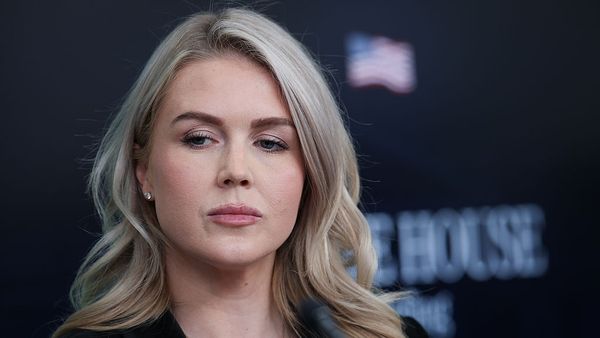
Working as the son of three-time Oscar winner Daniel Day-Lewis, arguably the greatest living actor, is both a blessing and a curse for a 27-year-old director trying to break into the industry. There’s access to a $14 million budget for your feature debut, and to, well, arguably the greatest living actor for your lead role. Yet, there must also be an omnipresent atmosphere of ‘nepo baby’ allegations that’ll follow your every move, a difficulty in ascertaining your own voice and career outside your father’s shadow.
This is the situation Ronan Day-Lewis finds himself in amid the release of his directorial debut, Anemone, which the father-son duo co-wrote together. Day-Lewis senior stars as Ray Stoker, a former British soldier, scarred by his role in the Troubles, who has retreated from life, self-isolating himself in a makeshift cabin in the woods. His brother, Jem Stoker, played by Sean Bean, boasts the same military background and goes to visit Ray to bring him back to his wife and son from his hermitic existence. The film centres on their complex relationship, fractured and haunted by their family and military history as they temporarily live atop each other in the cabin.
Daniel is famous for his method acting, an all-consuming process where he not only embodies but becomes the character - whether it’s the oil-lusting Daniel Plainview in There Will Be Blood, or Reynolds Woodcock in Phantom Thread. On set, Ronan found that difficult to square with his familiar father at first. “There was a little bit of that shock when I first got on set and suddenly it was like, you know, I became aware of him as who he is as well as my dad,” he tells me. “Even though he’s my dad, it was still kind of slightly intimidating as a concept to work with him,” he adds.
Ronan is unfazed at the mention of the phrase ‘nepo baby’ - self-aware and swift in his response. “It's hard for it not to [affect me],” he says. But, “I ended up in this insanely fortunate position to be able to not only make a film, but also with these incredible actors, obviously, you know, one of them is my dad,” Ronan explains. “I'm definitely aware of how insanely lucky I am.”
The pair began writing the film almost by coincidence, Ronan says. “For a few years, I had this idea of wanting to write something about brotherhood, the archetype of brotherhood,” he explains, “and then it turned out that he [Daniel] independently had this desire to write something about brothers, and so that kind of became the seed for us.” The writing process was an organic one. “We didn’t have an outline,” Ronan tells me, “ We were just following the characters into the dark.”
The film reflects that. It’s an invasive look into the minds of two emotionally stunted men, often taking on a theatrical feeling with the intimate dialogue, limited set changes, and a cast of just five. This intimacy allows both Daniel and Bean to thrive.
.jpeg)
Anemone was shot on Anglesey, off the coast of Wales, for several long months, but it’s set in rural northern England. Ronan wanted “that feeling of someone kind of living at the edge of the earth,” he explains. Much like England itself, the characters and the film seem haunted, and definitively shaped by their history, the present’s psyche in constant negotiation with the past. This haunting also holds a physical manifestation throughout the film, a lurking, foreboding storm; “The storm cloud suspended over everything in terms of literally the weather but also as the past pooling up right underneath the skin of it,” Ronan explains.
Dotted throughout the film are moments of magical realism that feel drawn from the works of Studio Ghibli - Ronan highlights My Neighbour Totoro as a particular favourite. One of the magical images from Anemone is framed in its initial conception as a painting behind Ronan’s head (Ronan is also a successful painter, holding a recent exhibition at Megan Mulrooney Gallery in West Hollywood). Through embedding his mystical paintings and creatures, Ronan says he aimed to create “something that's kind of beyond the human drama in the foreground.”
.jpeg)
This - though sometimes jolting from the often hyper-immersive conversations between Daniel and Bean - pulls himself and the rest of the film out of the shadow of what could’ve been an all-dominating Daniel performance, establishing a clear and unique visual style for his directorial debut.
Ronan, whose mother is filmmaker Rebecca Miller, grew up on the film sets of his parents, spending time in Texas for There Will Be Blood and on Prince Edward Island for The Ballad of Jack and Rose. He also began experimenting will filmmaking at the age of 7. “There was something about that that became really intoxicating,” he says. Combined with the time spent on professional sets, he gained a “taste for that.”
“It feels cool to be able to kind of enter a tradition,” Ronan says of following in his parents' footsteps. Yet, Ronan will have to separate from his father at some point in his career. Still, he’s enjoying it while he can. “It was definitely incredible,” he says, grinning.







